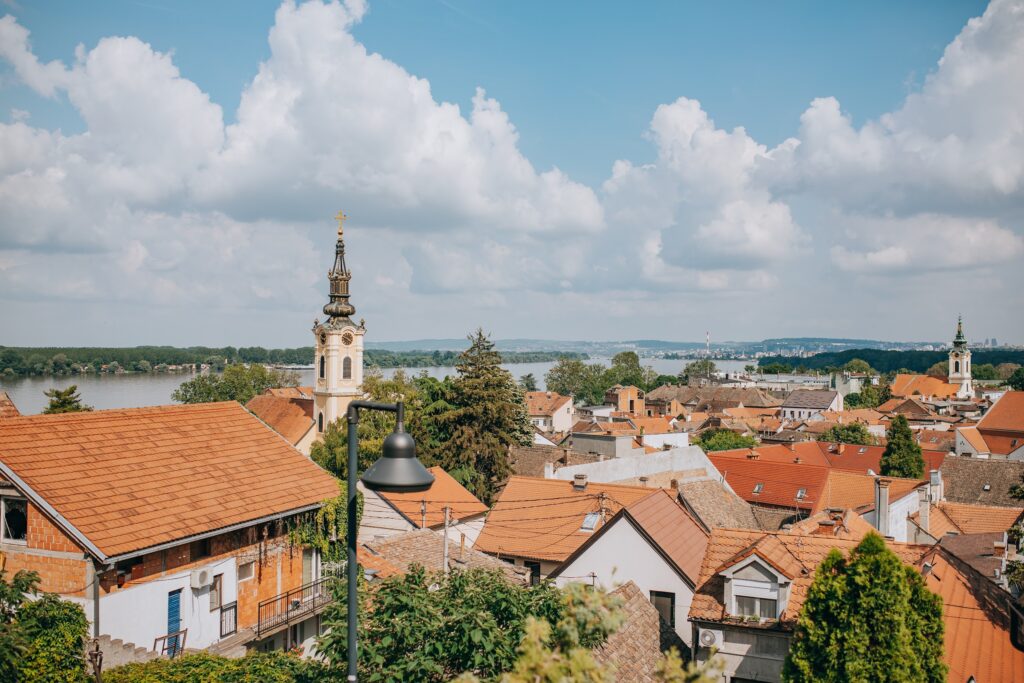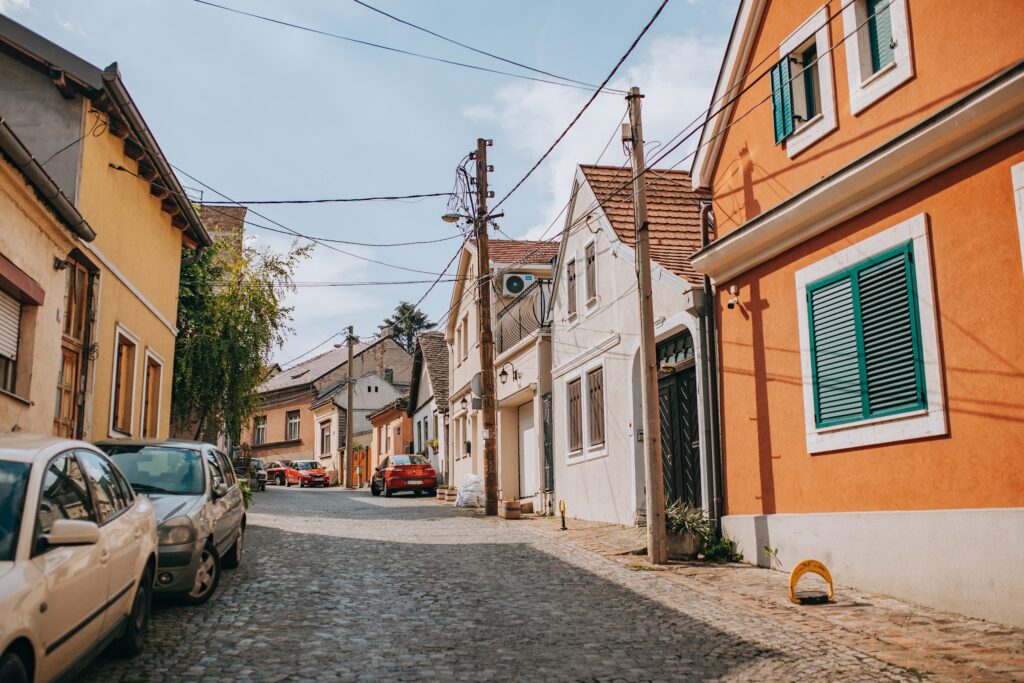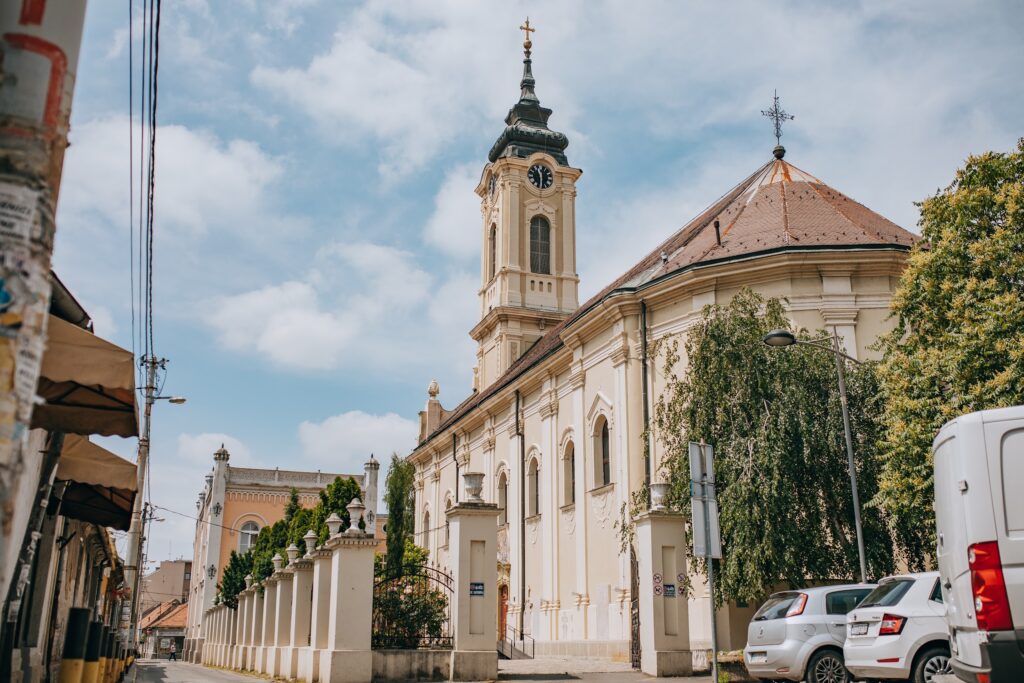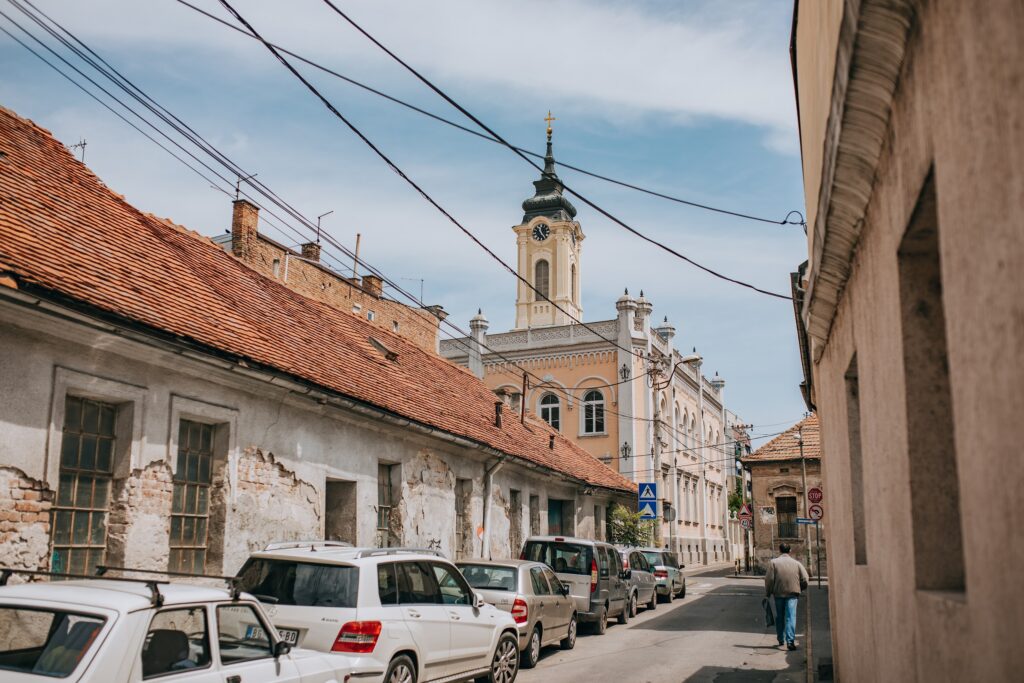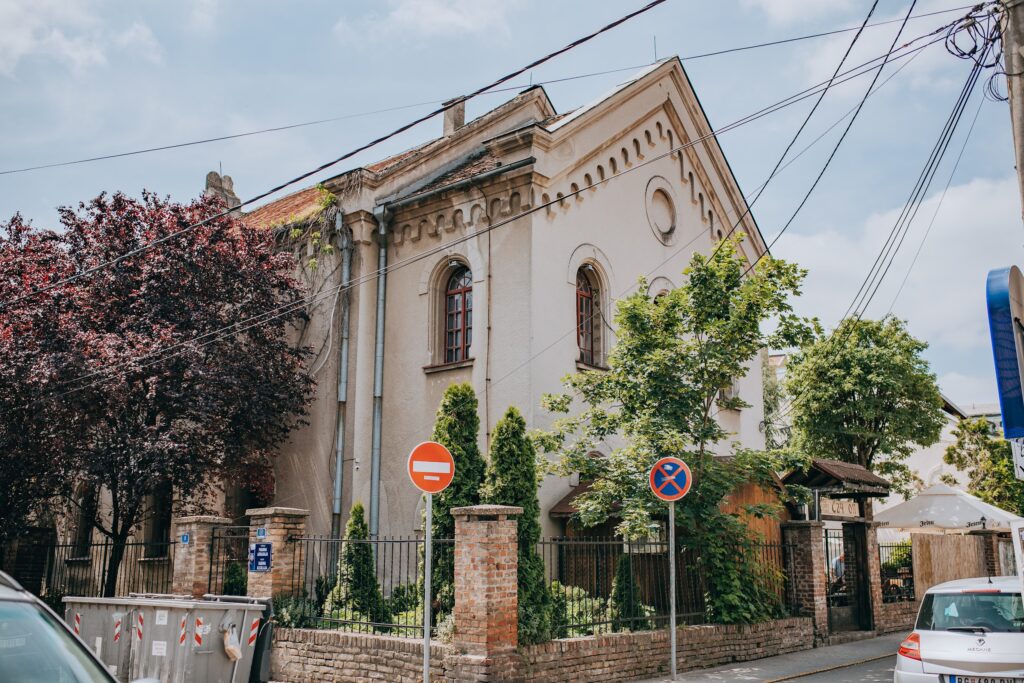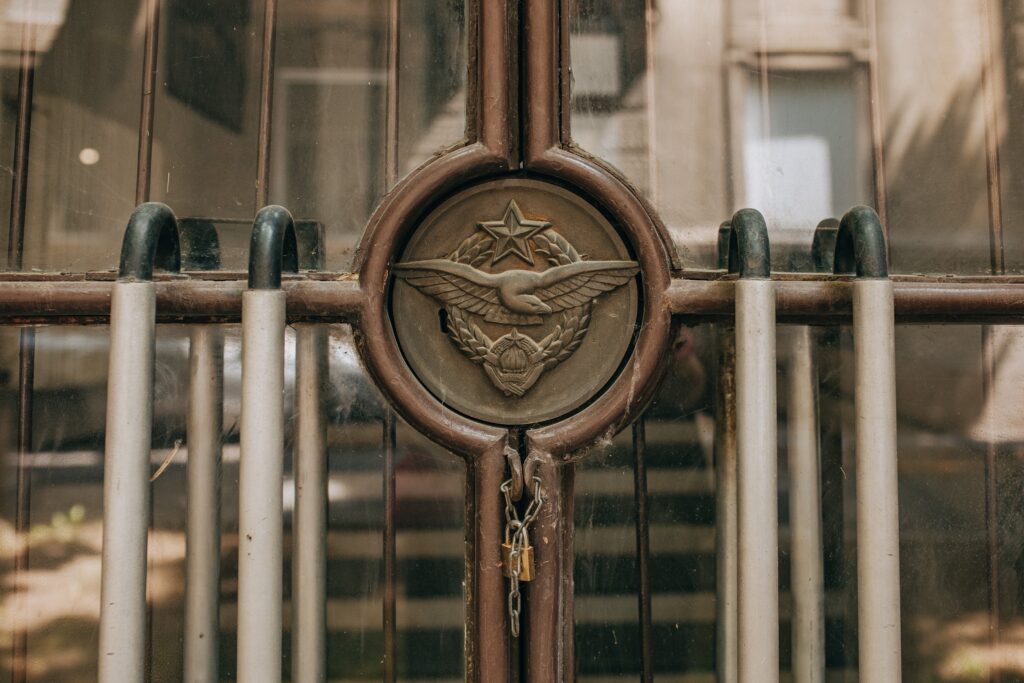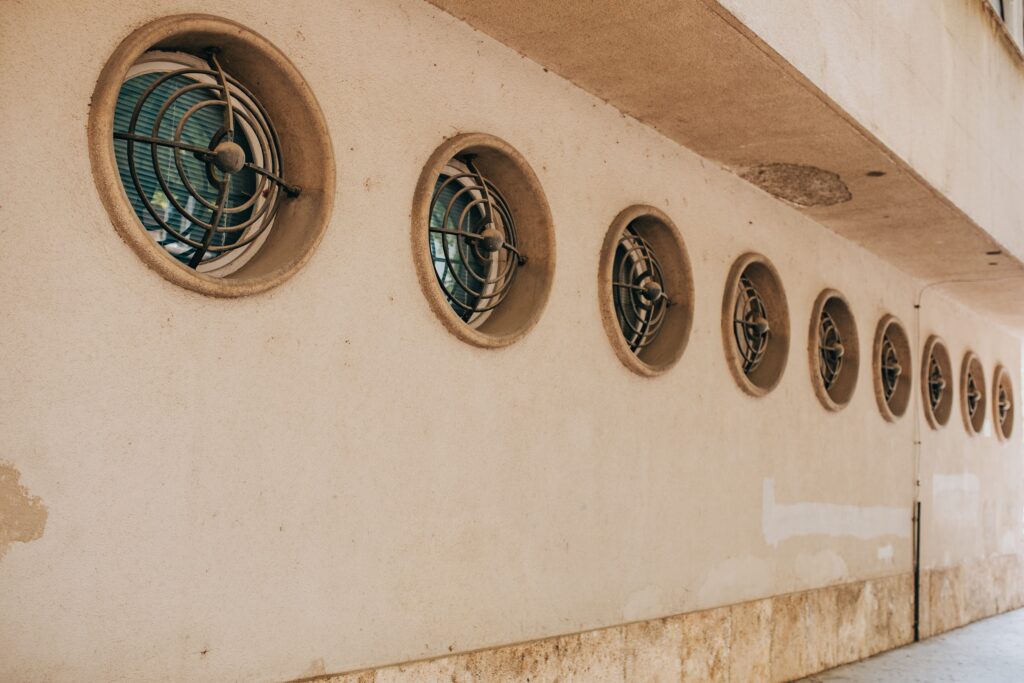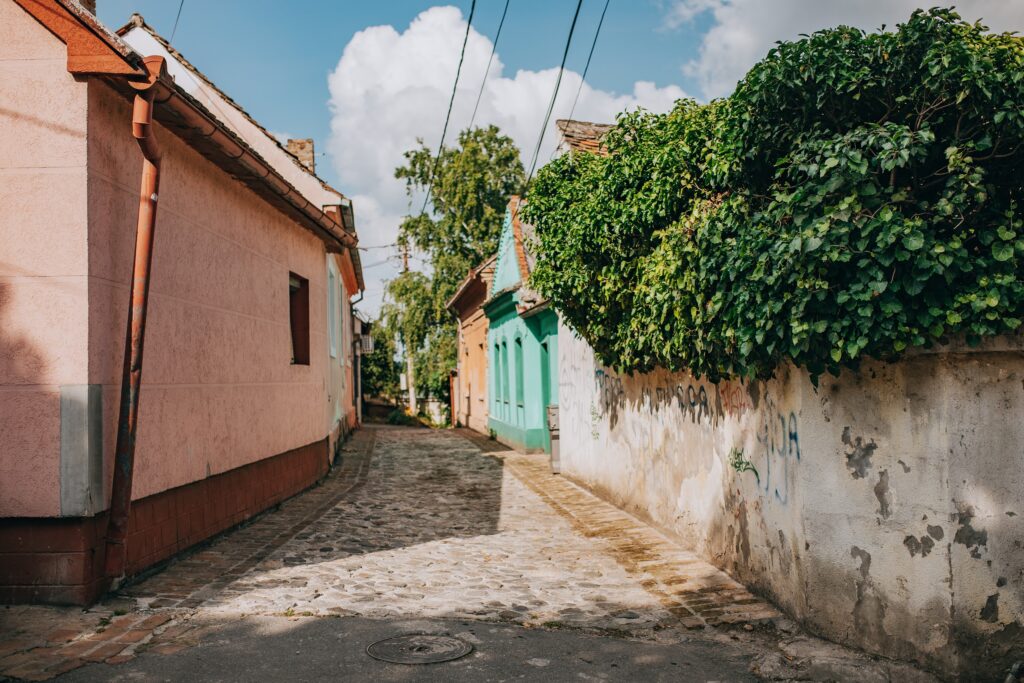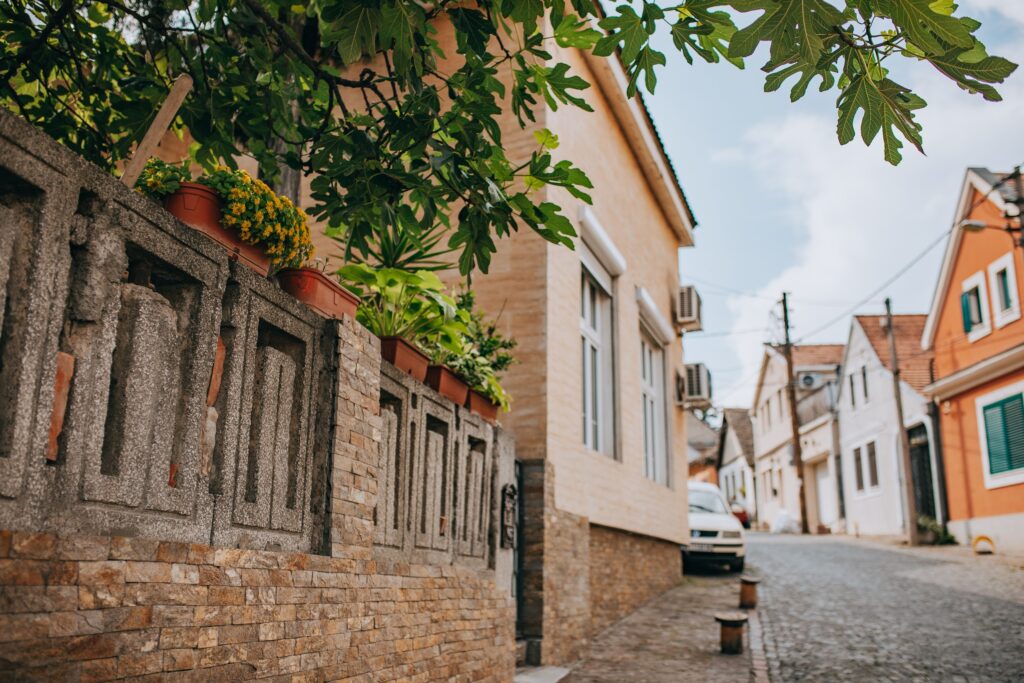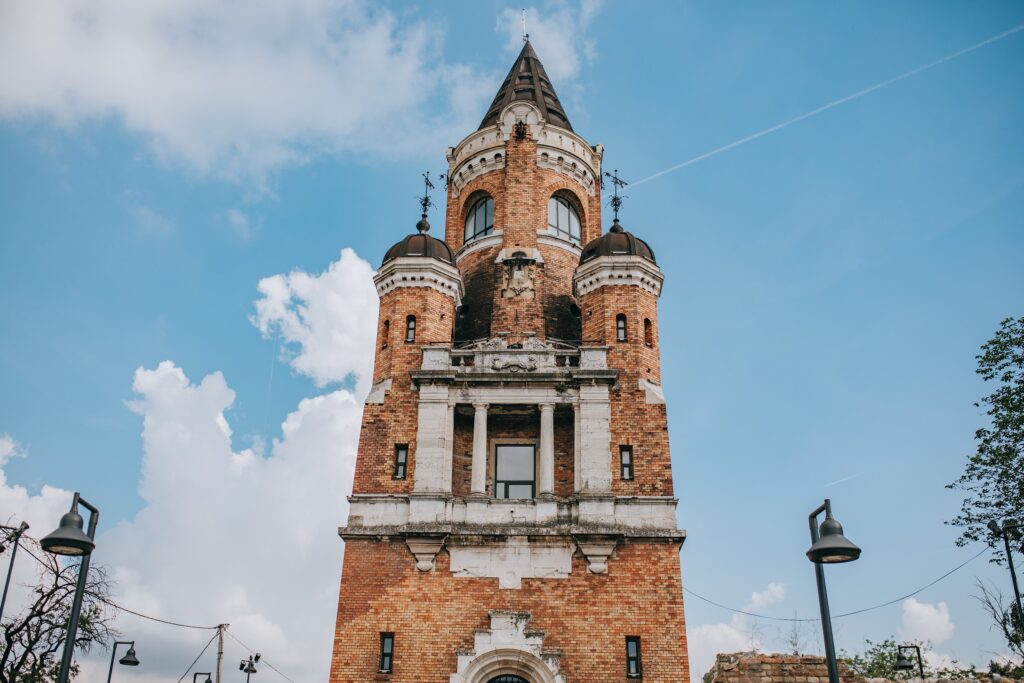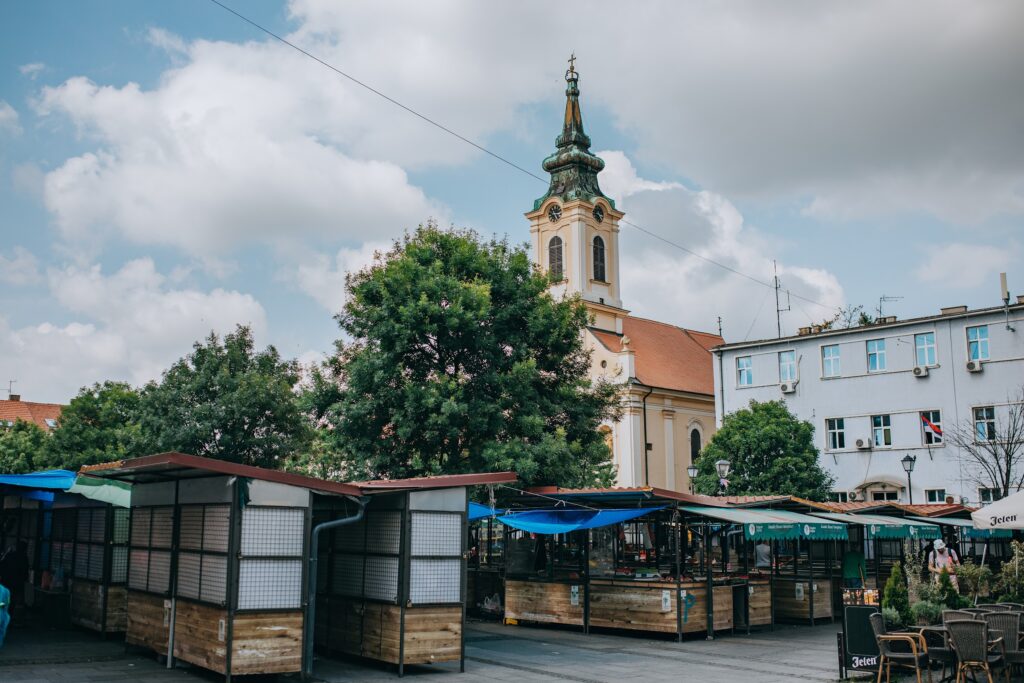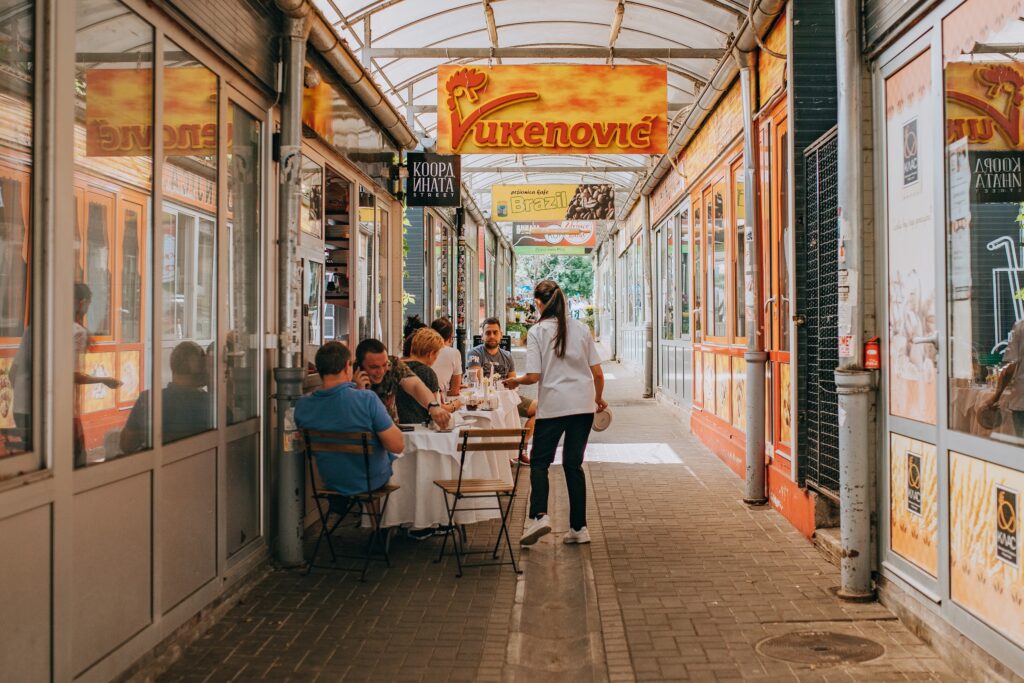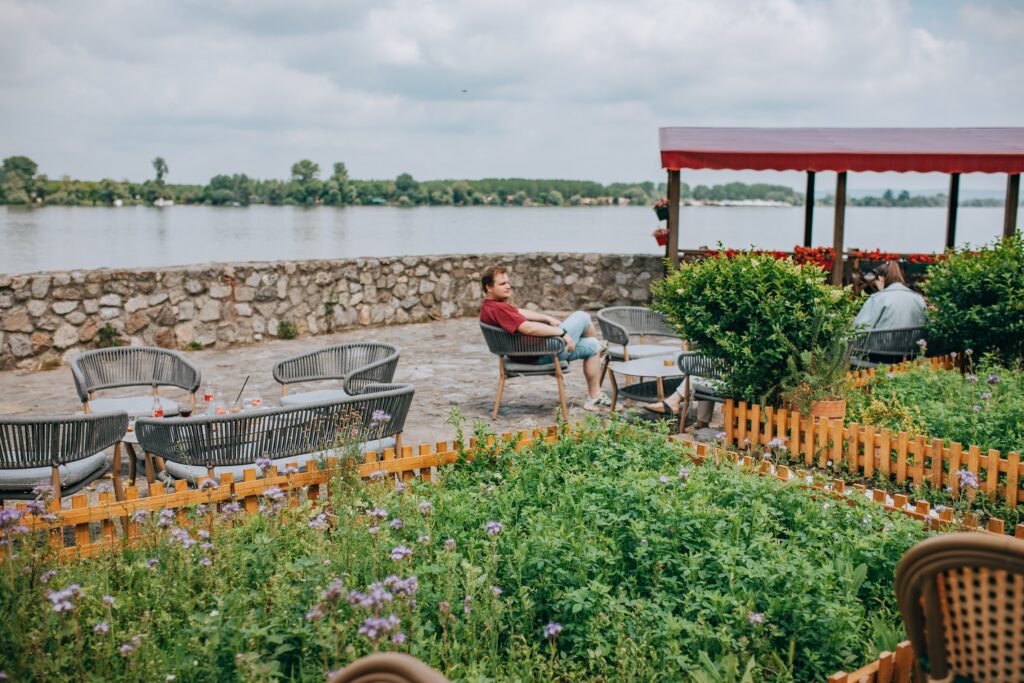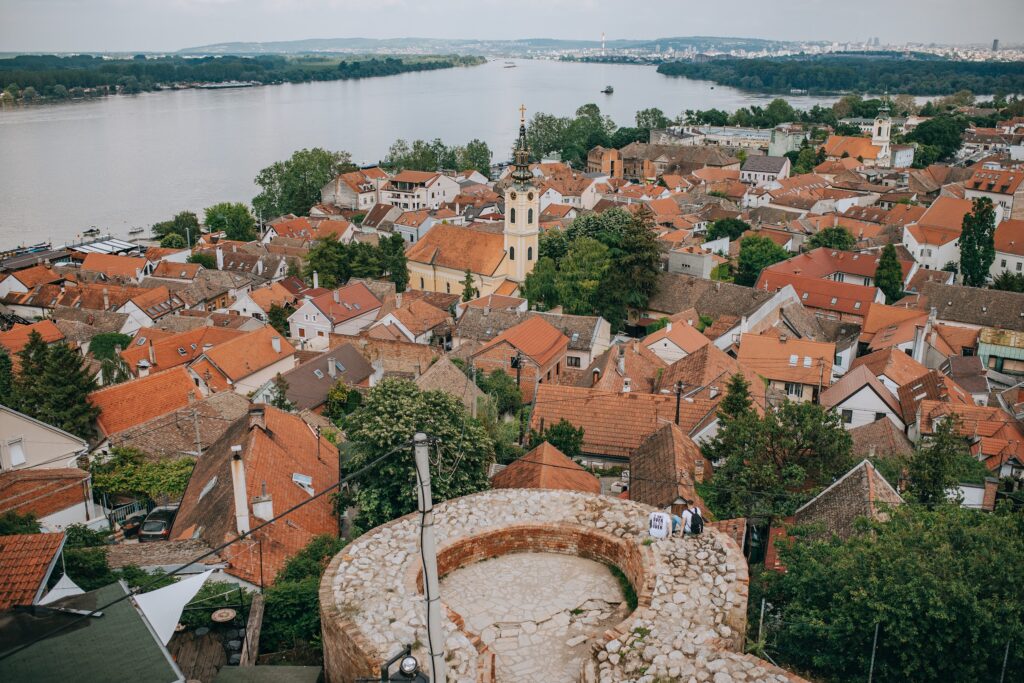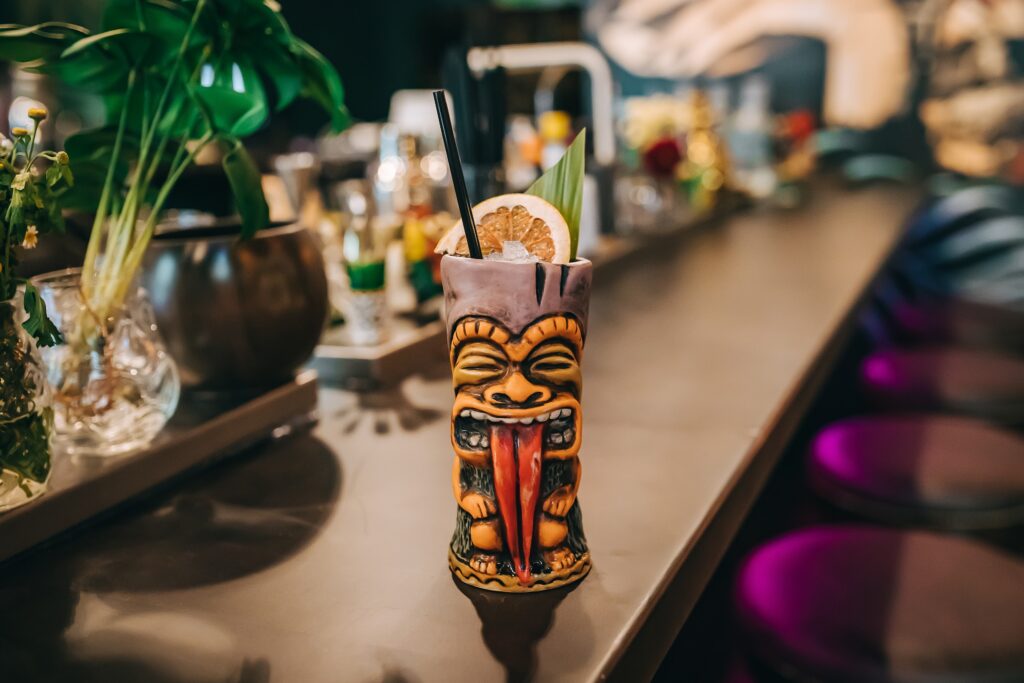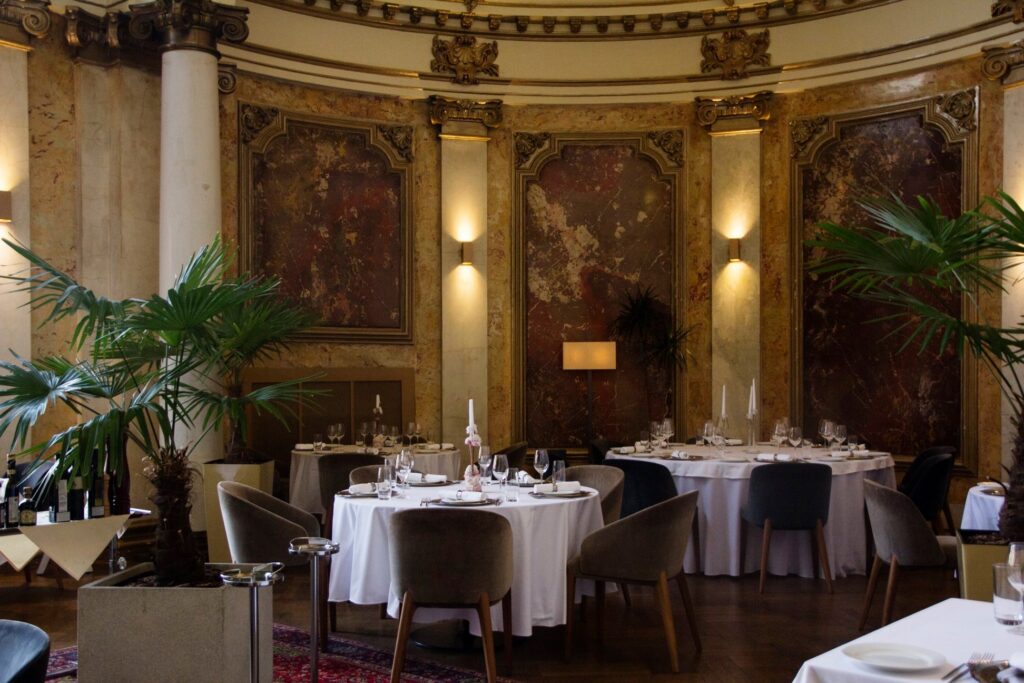Of all the modern areas of Belgrade, Zemun is the most special, since for most part of its history it was a separate city. It finally became part of Belgrade only after the Second World War. Both cities were Roman settlements, both survived the stormy period in the Middle Ages, both entered the Ottoman Empire. Their story dispersed in the 18th century, when Belgrade stayed with Osman, and Zemun was taken by the Habsburgs. As a result, Zemun is strikingly different from Belgrade both with its architecture and the atmosphere of the provincial middle european town.
We will begin to explore Zemun from its former outskirts – until the end of the 19th century, the border of the city used to be near the modern Aviator Square (Aviatičarski Trg) and was controlled by a military garrison. Despite all the changes continuity is preserved – the building of the Military aviation headquarter rises above the square, still waiting for restoration. It was built in the 1930s, when Zemun and Belgrade were already the same state, and is considered to be one of the masterpieces of interwar Yugoslav modernism.
The City park is situated nearby, until the end of the 19th century this territory was a quarantine complex, a sanitary cordon protected the empire not from military dangers, but from threats to health. Two sacred objects have been preserved from the complex – the Catholic Church of St. Roha and the Orthodox Chapel of St. Archangels Michael and Gabriel. Temples are stylistically similar, and at first glance their confessional affiliation can only be distinguished by orientation of the altar.
Even by the standards of the Habsburg Empire, Zemun was a very multinational city. Behind the park the former Jewish quarter begins, in the 19th century the rabbi Alkalai, the forerunner of Zionism, preached in it. Of the two synagogues of the Jewish part of Zemun, only one is preserved, the Ashkenaz synagogue, but now it is a restaurant of Serbian cuisine inside it.
One of Zemun’s largest temples is the Orthodox Church of the Holy Virgin. It was built jointly in the 18th century by Serbs, Greeks and Aromanians, the main Orthodox population of Zemun. Before the First World War some of the divine services were in Greek language, and if you look closely, Greek letters on the tombstones on the side facade of the temple can be found.
While the lower class lived in the outskirts of Zemun by grouping on a confessional basis, the elite lived in a multinational center – on the streets “Glavna” and “Gospodska”. Their mansions of the 19th century were preserved there – usually two-story houses with retail space on the ground floor. The local elite consisted mainly of merchants. In the courtyard of the house at Gospodska street, 4, the grape vine of respectable age was also preserved, according to the most modest calculations it is 130 years old.
The wall of the neighboring house in Gospodska street is decorated with a kind of local-patriotic monument: the mural “Zemun poster”. Looking at it, one can play a game of recognizing Zemun sightseeings.
The main pride of Zemunians is the central market, they consider it the best market in Belgrade, thanks to a wide range and fish rows. The most important point on the market is the “Koordinata” restaurant, created according to the standards of chef Anthony Bourdain. Experiments with food, seasonal menu, rewards and recognition turn it gradually into a popular place, but this also means that you need to book a table. There is a perfect alternative for those who are not hungry in the Zemun market – the “FUKA” specialty coffee shop.
On Lagumskaya street, which name refers to the Zemun dungeons – “lagums” – you can begin to rise to the Hill Gardosh. The main attraction of Laguma is an abandoned building of the foundry of the Pantelić family, where bells used to be produced and tower clocks were made. Despite the security status and plan to open the museum of ancient crafts here the building is empty and gradually destroyed.
Part of Zemun at the bottom of the Gardosh Hill has been perfectly preserved, here you can fully feel the atmosphere of the provincial city of the empire, which doesn’t exist anymore, just walking among the buildings of the 19th – early 20th centuries. At the top of the hill the Millennium Tower rises, built in 1896 in honor of the arrival of the Hungarians on the Pannonian plain ten centuries ago. After the First World War such monuments outside Hungary were destroyed, but the Zemun tower was preserved, although it lost many architectural details. But the ruins of the fortress at its bottom are newly built, although they repeat the contours of the medieval fortress. Panoramic view of Zemun and Belgrade already opens from bastions, but the best view will be provided for those who rise to the top of the tower at working hours of the gallery, located inside, and examine previously explored points from the new perspective.
